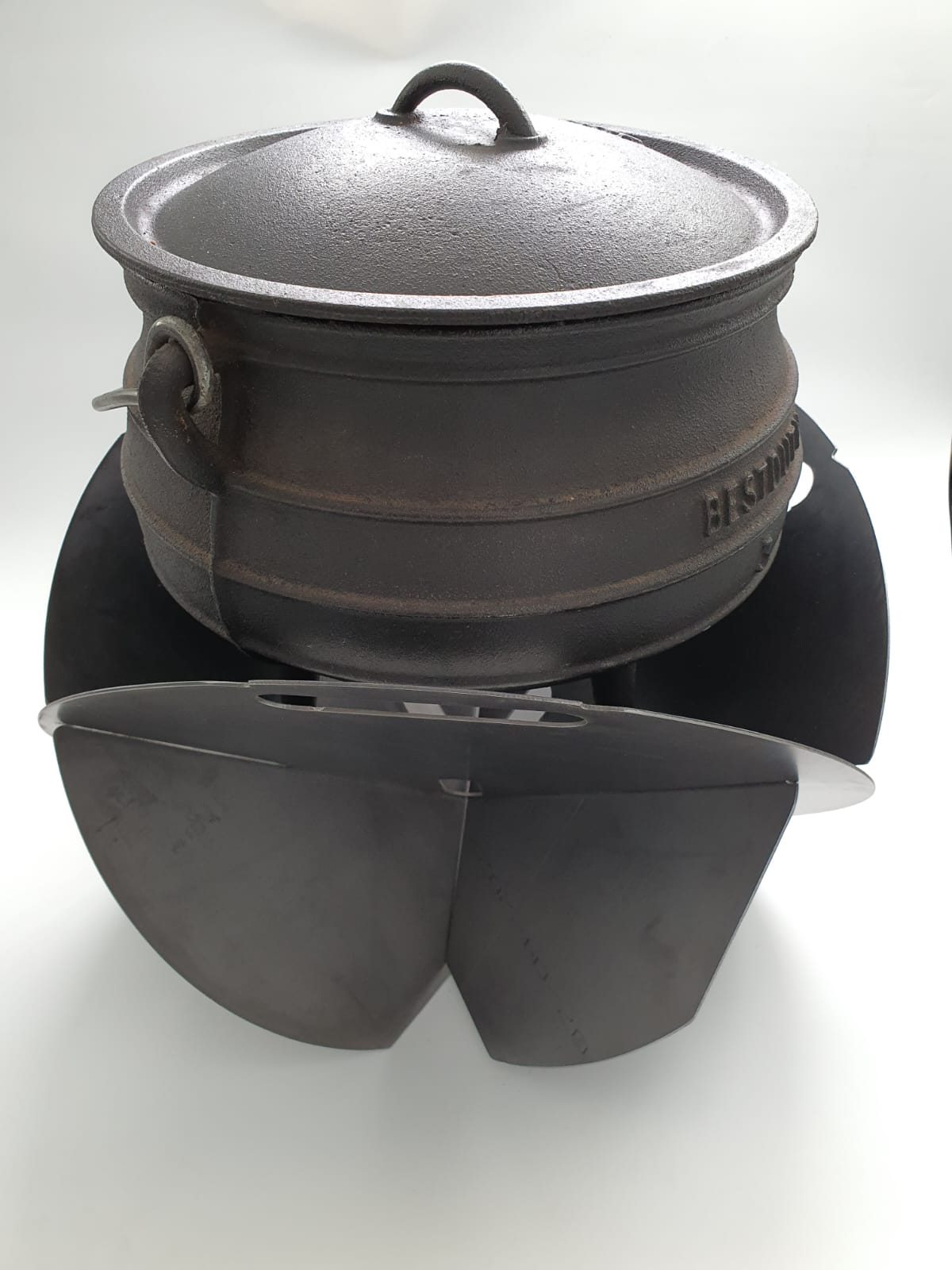
Grilling Seafood: A Culinary Adventure
Share
Grilling seafood is an art that combines the fresh flavors of the ocean with the smoky essence of the grill. It's a culinary adventure that can transform your backyard into a seaside escape. The key to mastering this art lies in selecting the right seafood, understanding the grilling process, and using the perfect blend of spices.
Selecting the Right Seafood for Grilling
When it comes to grilling, not all seafood is created equal. The best candidates for the grill are those that can withstand the direct heat without falling apart.
- FIRM, HEARTY FISH like kabeljou, tuna, yellow tail, snoek etc. are excellent choices. These types of fish maintain their structure and absorb the grill's smoky flavors beautifully. Remember, the fresher the seafood, the better the flavors, so it is always a good idea to shop for your seafood on the day you plan to grill it.
- SHRIMP, PRAWNS, SHELLFISH - Small pieces of fish such as these work really well on kabobs. Cook directly on the grill and pay close attention as seafood cooks quite quickly. Any of these items can be marinated before cooking to add interest and flavor.
- BIVALVES - Oysters mussels, clams and scallops are easy to prepare on the grill. Heat unshucked over a hot fire until their shells open. At this point they can be removed to be eaten on left on a little more to give them more of a grilled, smokey flavor.

Cooking Seafood to Perfection
Grilling seafood requires a delicate touch to prevent overcooking or drying out. Timing is crucial when grilling seafood. Overcooking can lead to a rubbery texture, while undercooking may result in a raw center. Preheat the grill to medium-high heat and lightly oil the grates to prevent sticking. The doneness of seafood is crucial for both safety and enjoyment. It is recommended cooking fish to an internal temperature of 62°C, ensuring it flakes easily and is no longer translucent in the center. Generally, this translates to about 6-10 minutes over medium-high heat for a 2.5 cm (25mm) thick piece of fish. For shellfish, the cooking time may vary, but they often cook faster than fish. Remember to keep a close eye on the cooking process, as seafood cooks quickly.
Seasoning Grilled Fish: Enhancing the Ocean's Bounty
Grilled fish is a delicacy that, when seasoned well, can transport you to a culinary paradise. The spices you choose can elevate your grilled seafood from good to great. Basting the seafood with butter or a glaze during the grilling process adds richness and depth. The key to the best seasoning lies in complementing the natural flavors of the fish without overpowering them.
Here's a guide to creating the perfect harmony of flavors for your next grilled fish feast.
- The Art of Simplicity: Sometimes, less is more, especially when it comes to seasoning fish. A simple combination of salt, freshly ground black pepper and a squeeze of lemon can be all you need to enhance the fish's natural taste. The salt helps to bring out the inherent flavors, while the pepper adds a subtle heat that complements the fish's delicate texture.
- Citrus Zest: The bright and tangy notes of citrus zest work wonders on grilled fish. Lemon, lime, or orange zest can be mixed with olive oil and brushed onto the fish before grilling. This not only adds a refreshing zing but also helps in creating a beautiful crust on the fish's surface.
- Fresh Herbs: Herbs like dill, parsley, cilantro, and basil offer a fresh and aromatic touch to grilled fish. Finely chopping these herbs and combining them with a bit of olive oil creates a marinade that infuses the fish with vibrant flavors.
- Spice Blends: For those who enjoy a bit more complexity, spice blends can elevate the taste of grilled fish to new heights. A Mediterranean blend with oregano, thyme, and garlic, or a Cajun mix with paprika, onion powder, and cayenne pepper, can add depth and warmth to the dish.
- Marinades and Glazes: Marinades and glazes can also be used to season grilled fish. A teriyaki glaze with soy sauce, ginger, and honey, or a classic garlic butter sauce, can add a rich and savory dimension to the fish. These should be applied towards the end of grilling to prevent burning and to coat the fish with a flavorful layer.
Regardless of the seasoning choice, it's important to maintain a balance. The seasoning should not be so strong that it masks the fish's flavor. It should rather serve to enhance and celebrate the natural taste of the seafood.

Mastering the Skills of Seafood Grilling
Grilling seafood requires some special skills and tools. A grilling basket, fish spatula, grilling tongs, and a basting brush are essential for handling delicate seafood without it sticking or falling through the grates. Preheating the grill, oiling the grates, and controlling the temperature are also critical steps in achieving grilling perfection.
Preventing fish from sticking to the grill is a common challenge for many outdoor cooking enthusiasts. The delicate texture of fish can make it prone to sticking, which can lead to it breaking apart and becoming difficult to serve. However, with a few expert tips, you can ensure your fish remains intact and beautifully grilled.
- Choose the Right Fish: Selecting the right type of fish is crucial. Firmer fish are less likely to stick due to their sturdy texture.
- Prepare the Grill: Ensure your grill is clean and the grates are well-oiled. Preheat your grill to the appropriate temperature before adding your fish.
- Oil the Fish: Brush your fish with a thin layer of oil before placing it on the grill. This creates a barrier that prevents sticking and helps in achieving a nice sear.
- Use a Grill Basket: A grill basket can be an excellent tool for grilling more delicate fish. It keeps the fish secure and makes flipping easier without the risk of sticking.
- Grill on a Cedar Plank: Grilling fish on a cedar plank not only prevents sticking but also imparts a delightful smoky flavor to the fish.
- Cook Skin-Side Down: If your fish has skin, cook it skin-side down without flipping. The skin acts as a natural barrier between the flesh and the grill grates.
- Use Citrus Slices: Lay thinly sliced citrus fruits like lemons or oranges on the grill grates and place the fish on top. This prevents sticking and adds a zesty flavor.
- Don't Overflip: Let the fish cook undisturbed for most of the cooking time. Only flip once to minimize the chances of the fish sticking.
- Proper Timing: Fish cooks quickly on the grill. Keep a close eye on it and remove it from the grill as soon as it's done to prevent overcooking and sticking.

Savoring the Results:
Once your seafood is perfectly grilled, it’s time to enjoy the fruits of your labor. Serve the grilled seafood with your favorite sides, such as grilled vegetables, rice pilaf, or a fresh salad. Garnish with lemon wedges, citrus salsas, herbs, or a drizzle of homemade sauce to enhance the flavors further. Remember to savor each bite and let the taste of the ocean transport you to coastal bliss.
By choosing high-quality seafood, mastering the grilling process, and experimenting with flavors, you can create a memorable dining experience for yourself and your loved ones.
So, fire up the grill, embrace the art of grilling seafood, and let the flavors of the ocean take center stage on your plate. Happy grilling!
Find some more tips on YouTube: https://www.youtube.com/watch?v=4yZkVW-lPOI
https://www.youtube.com/watch?v=9-LzNQnUfl4 and many more

